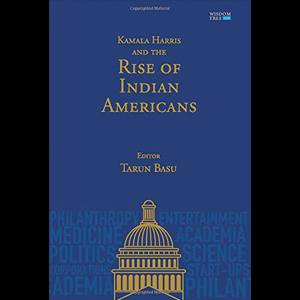Excerpt: Reflections on an Emerging Community

Here’s an excerpt from a new book of perspectives that tells the story of the rising Indian-American community through the eyes of public intellectuals and academics, former diplomats, journalists, community organizers and leaders, and industry representatives.
It was a daunting task, especially in scouting for the right authors for this anthology, and they in turn having the time and the interest in this seminal project. One of those who quickly recognized the book’s potential was MR Rangaswami—or MR as he is better known—the San Francisco-based IT entrepreneur, investor, philanthropist, and founder of Indiaspora, an influential network of global Indian-origin leaders from diverse backgrounds and professions that seeks to “transform the success of the Indian diaspora into meaningful impact worldwide.”
He and his colleague, Indiaspora executive director Sanjeev Joshipura, helped identify the right people for some of the chapters and got them hooked into the project, despite its impositions on their tight schedules. Also very solicitous and supportive of the project was the veteran community activist Thomas Abraham, the New York-based chairman emeritus of the Global Organization of the People of Indian Origin (GOPIO), the earliest of community mobilizers, that is also a global network.
This book is neither an attempt to document the community’s saga, nor is it a compendium intended to glorify the community or put a shining light on their achievements alone.
It is an eclectic amalgam of perspectives on the emerging Indian-American story as seen through the eyes of public intellectuals and former diplomats like Shashi Tharoor, TP Sreenivasan, and Arun K Singh; community and professional leaders like MR Rangaswami, Deepak Raj, and Raj Gupta; industry representatives/observers like Ajay Ghosh, Vikrum Mathur, and Bijal Patel; diaspora scholars/academics like Pradeep Khosla, Maina Chawla Singh, Sujata Warrier, and Shamita Das Dasgupta; journalists like Aziz Hanifa who have lived and tracked the Indian-American story over decades.
So the narratives are, in many ways, personalized and subjective views of the author(s), through their own lived or viewed experiences, or a snapshot of a professional realm in which Indian-Americans have made a name for themselves.
It also must be borne in mind that the “success story” of the community has not touched all. Some activists, like our authors Sujata Warrier and Shamita Das Dasgupta, see the “model minority” label as self-serving and elitist and have propounded an “alternative model of success” among the marginalized sections, including socially non-conforming groups and women.
As an Indian-American entrepreneur and civic leader, Frank Islam notes in a recent article, “While the community’s many successes and accomplishments have been well-documented, a less-publicized fact is the plight of hundreds of thousands of Indian nationals in the United States.”
Indians constitute 4 percent of all the undocumented immigrants in the United States— about 630,000 people—a significant number considering that Indian-Americans form just 1 percent of the US population. This would mean every eighth person of Indian origin in the United States is an undocumented immigrant.
The Community in Spotlight
The Indian-American community was much wooed by both Democrats and Republicans prior to the 2020 election like never before. Of the roughly 4 million Indian-Americans, around 2.4 million were eligible voters. And of those, 1.4 million lived in nine battleground states.
As a Trump campaign official said, no doubt to please the community: “The powerful Indian-Americans are a force to reckon with today. You have not realized your own power, but President Trump understands your power.”
The Democrats, more knowledgeable about Indian diversity, released campaign ads in 14 Indian languages and with Biden taking pains to greet the community on their important religious festivals like Ganesh Chaturthi and Diwali.
After the November 2020 elections saw a clutch of Indian-Americans, including many US-born, rising to political prominence at national, state, and local levels, one young activist proudly proclaimed, “Our time has come.”
Editor and commentator Tarun Basu heads the Society for Policy Studies. Reprinted with the permission of Wisdom Tree from Kamala Harris and the Rise of Indian Americans.
Enjoyed reading Khabar magazine? Subscribe to Khabar and get a full digital copy of this Indian-American community magazine.
blog comments powered by Disqus












